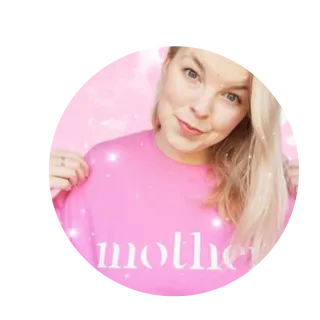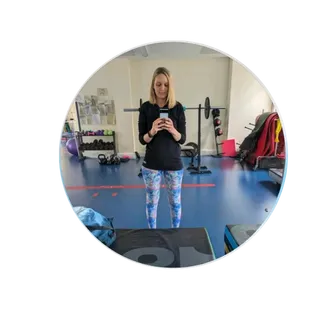Helping You Work With Your Brain, Not Against It
ADHD coaching for real life, whether you’re newly diagnosed, feeling overwhelmed, or just trying to hold it all together.
1:1 support, live group sessions, and practical tools that actually fit how your brain works.
New affordable online coaching launching in

Helping ADHD Minds Find Their Own Way
I’m Fraser, an ADHD coach, father, and former corporate leader who didn’t realise I had ADHD until I was 43.
Like many late-diagnosed adults, I spent years thinking I just wasn’t good enough. I pushed myself hard, burnt out often, and masked my struggles to keep up with a world that didn’t quite fit.
When I finally got diagnosed, everything changed. I stopped blaming myself and started building a life that worked for my brain. Now I help others do the same.
I work with adults who feel overwhelmed, newly diagnosed, or stuck, offering practical strategies, honest conversations, and a place where they don’t have to explain themselves.
Whether it’s 1-to-1 coaching or a structured group programme, the goal is always the same:
To help you feel understood, and to help you move forward.
Does any of this
SOUND FAMILIAR?
You always feel behind, even when you’re working flat out.
There’s a constant mental to-do list running in the background, and even small tasks feel like a mountain.
You’ve been called lazy, disorganised, or too sensitive.
But deep down, you know you’re trying harder than most people realise.
You procrastinate, overthink, and crash hard when you finally stop.
It’s not just time management — it’s emotional exhaustion, decision fatigue, and never feeling like you’re doing enough.
You’ve Googled ‘Do I have ADHD?’ more than once.
Maybe you’ve been diagnosed. Maybe not. But you know something isn’t working, and you’re ready for support that actually makes sense for your brain.

Our Mission
Helping ADHD Adults Feel Less Alone — and More in Control
Whether you're newly diagnosed or have been masking for years, our mission is simple:
Help you understand your brain, stop the spiral of shame, and build a life that actually fits.
How I Can Help
1:1 ADHD
Coaching
Get tailored support with practical tools, calm accountability, and a coach who gets how your brain works.
Perfect if you're ready for personalised help, but not sure where to start.
6-Week ADHD
Group Programme
Live coaching, structure, and a toolkit that actually fits your brain — all in a space where you realise you're not the only one.
Ideal if you want guidance and to hear from others like you.
Free ADHD
Strengths Report
Not ready for coaching? Start with a personalised analysis based on your ADHD traits — and see what’s actually working in your brain.
A zero-pressure way to get insight, hope, and clarity.
What others are saying

"Fraser is awesome"
Fraser is awesome and I enjoyed working with him. He taught me so much and in a way that makes sense to me. He's given me a new found confidence.


"My life changed forever"
He taught me so much and in a way that makes sense to me. He's given me a new found confidence.


"Life was SO hard"
Fraser helped me to turn the waltzers into teacups and calm the chaos, I'm still spinning and dizzy at times but now I get to enjoy the views around me!

Fraser & Cubic write a blog to help you with your ADHD if you aren't ready to reach out for help just yet.

Understanding ADHD, Autism and Aphantasia Connection
What is Aphantasia?

Aphantasia is the inability to form mental images in the mind’s eye. For most of the general population, if you say “picture a red apple,” they’ll see a visual image... some sharp and realistic, others hazy but recognisable. Their mental pictures act like a private cinema.
For those with aphantasia, nothing appears. The apple doesn’t show up. Instead, what they hold is just factual information: red, round, shiny, with a stalk. This lack of mental imagery is what defines the condition.
This isn’t a brand-new discovery. In the late 1800s, Sir Francis Galton carried out surveys and found that some people couldn’t visualise things at all. He wrote about it in medical literature, but the world wasn’t ready. It was tucked away and largely ignored.
Fast forward to the early stages of the 2000s, and neuroscientist Professor Adam Zeman published a famous case study of a man who lost his mental images after a brain injury. That single paper lit a fuse. Since then, interest in this cognitive phenomenon has exploded, especially with recent research from the University of New South Wales and other institutions.
Today, we know that around 2 to 3 percent of people live with total aphantasia, while many more experience partial aphantasia. Some see faint outlines, fragments, or flashes. Others live at the opposite of aphantasia, known as hyperphantasia, where visual images are so vivid they are almost indistinguishable from reality.
What I Actually See

For me, it’s not as simple as “nothing.” When I close my eyes, it looks like a night sky. A few stars scattered in the dark. Sometimes they connect into faint constellations, like a dot-to-dot puzzle, hinting at a shape. But it never becomes a full picture.
My go-to test is always the red apple. Probably because it’s the textbook example. But no apple appears, no imagined image of a scene. Just the starry night.
This leaves me wondering whether I truly have aphantasia or just a muted form of it. And here’s the kicker... how can you compare what you see in your mind’s eye with anyone else? You can’t. Unlike colour blindness, where you can compare swatches, there’s no shared reference point for mental visual imagery.
Family Survey: Different People, Different Minds

The best clues come from looking at my family.
My daughters can mentally map routes with ease. One says it’s like flying over the journey from above, the other like driving along it. That’s visual processing in action.
My autistic stepdaughter doesn’t see pictures at all. She sees words, even in her dreams. Her “aphantasia dreams” look like scrolling text, which makes sense given how autism spectrum disorder can shape sensory experiences.
Lou, my partner, also doesn’t see images. Early on, she asked for selfies whenever we were apart so she could hold on to something external. It was sweet, funny, and eye-opening.
What strikes me most is how each family member processes visual information in a unique way. For my autistic stepdaughter, her experience links directly to the autism spectrum disorder and how it shapes cognitive differences. For her, visual imagination is replaced by words, while for me it is stars and fragments. For my daughters, it is vivid and film-like. It shows just how many different ways the human mind can work inside a single household.
So in one household, we’ve got a full spectrum: vivid films, scrolling words, faint starry outlines, and no images at all. Different people, different ways.
ADHD and Aphantasia: Double Trouble

Living with attention deficit hyperactivity disorder already means juggling ADHD symptoms like poor working memory, distractibility, and time management issues. Layering aphantasia on top creates unique challenges.
Take faces. I don’t store a visual memory of them. When I see someone again, recognition is instant, but between meetings? Gone. Sometimes my brain fills in blanks with wild guesses.
Once, in London, I was striding boldly across Hyde Park convinced I’d spotted my parents’ neighbours. I was so sure of myself that I actually picked up pace, expecting them to be as shocked and delighted as I was. In reality, they just saw a man marching at them with purpose and probably thought I was about to mug them. By the time I realised it wasn’t them, I’d already reached full stride, so the whole thing ended with an awkward shuffle and an attempt at a casual nod. I don’t think I ruined their walk... but I definitely ruined my own.
Another time at a small village street festival, about 100 miles from where my parents live, I spotted who I thought was their gardener. I went straight up to him and asked, “What are you doing here?” He stared blankly at me. Confused, I followed up with, “Do you know who I am?” He nodded, which only made it worse. For a split second I was both irritated and baffled by the way he was looking at me, until it dawned on me... he wasn’t the gardener at all. He was just a bloke I’d chatted to in the park once. I walked away trying to look composed, but inside I was dying of embarrassment.
These blunders happen because I can’t hold on to an imagined image of a face. Recognition happens only in the moment, and occasionally my brain makes wild guesses that end in disaster.
School wasn’t easier. Teachers would say, “Picture this in your head” or “Visualise the story.” That instruction meant nothing. Other kids used mental visualization and mnemonic devices. I had to rely on repetition, lists, and structure. ADHD made focus hard enough. Without mental pictures, learning became a double hurdle.
Why So Many Don’t Realise

Here’s the thing... most aphants don’t walk around feeling broken. They just assume everyone thinks like them.
Colour blindness has a test. Aphantasia doesn’t. You can’t hand someone your internal night sky. It’s invisible.
That’s why TikTok and online communities have become so important. One viral post saying, “If you close your eyes and see nothing, that might be aphantasia” reaches thousands. Suddenly people go: “Wait, that’s me.”
I’ve seen family members, colleagues, even a close friend realise this through social media. Awareness spreads faster through a 20-second TikTok make video than it ever could in medical literature.
The Science Behind Aphantasia

What do we know so far?
Brain activity: fMRI scans show reduced activity in the visual cortex of aphantasic individuals during imagination tasks. Instead, the prefrontal cortex and reasoning areas light up.
Brain structure: Recent study results from the University of New South Wales suggest subtle differences in various brain regions, though the underlying cause remains unclear.
Case study: A retired 65 year old man developed total aphantasia after heart surgery, proving it can appear after a medical condition or brain injury. Stories like his underline just how fragile and complex the human mind can be.
Binocular rivalry: Aphantasic individuals often show different responses in tests designed to measure mental visual imagery, strengthening the evidence base.
PTSD: Some with post traumatic stress disorder say they wish they had aphantasia to avoid flashbacks. On the flip side, some aphants see it as a protective shield.
Psychologists often use the Vividness of Visual Imagery Questionnaire as a tool to measure where someone sits on the spectrum of mental visual imagery. For someone with hyperphantasia, their answers might describe scenes that feel almost real. For aphants like me, it feels like describing something that isn’t there at all.
New research continues to explore these ranges, but the common reason results are so mixed is that everyone’s self-reporting is based on something invisible to others.
There’s no known cure, no official treatment options. Aphantasia isn’t classed as a neurodevelopmental disorder, more a cognitive condition. Still, it has significant implications for daily activities, social interaction, and learning.
Daily Life With Aphantasia

How does it play out day-to-day?
Route finding: I can’t mentally map routes at all. If you asked me to picture the way to the supermarket, nothing comes up. What I do instead is logical stepping-stones. I know I’ll recognise the next part when I get there. I have a sense of the general direction but not the actual path. Even with somewhere as basic as where I’ve parked the car, I don’t “see” it in my head. I retrace the process... left at the lights, second row, near the trolley bay... rather than replaying a visual image.
Past experiences: I recall factual information rather than films in my head.
Future events: I don’t get a preview. I rely on lists and notes instead.
Dreams: I hardly remember them at all. And when I do, they’re gone within minutes. Trying to recall a dream without mental images feels impossible... all I’m left with is the faint residue of a feeling that doesn’t translate into anything useful. Many people talk about vivid, film-like dreams. For me, an aphantasia dream is more like waking up with a trace of a feeling and nothing more.
Social interaction: I recognise people in the present moment but can’t hold an imagined image. Cue embarrassing mix-ups like the gardener incident.
Learning: This is a big one. I’ve had to accept that if I want something to stick, I need to write it down. An image or infographic might help me understand something in the moment, but unless I read it, talk about it, and physically write it down, the chances of it staying in my head are slim. While others use mental pictures or mnemonic devices, I rely on repetition and words. Externalising information is the only way it takes root.
Another oddity is how visual distractions don’t pull me in the same way they do for others. If you show me a busy infographic, I don’t get lost in the colours or layout. Unless I actively process it, it will slide straight out of my memory. That is the heart of the aphantasia struggle... translating visual information into something my brain can actually use.
This makes cognitive processing more effortful. But it also means I’ve developed strong structure-based coping skills. I don’t rely on a mind’s eye that isn’t there.
Coping and Support

There’s no magic fix, but coping is possible. For me:
External tools: Lists, alarms, and structured time management.
Support groups: Online communities where aphants share their struggles and strategies.
Support system: Having family members who “get it” helps massively.
Therapy: Adapting therapy is also an important part of support. Cognitive behavioral therapy, for example, often leans heavily on imagery work... imagining safe places, visualising goals, or replaying events. For people with aphantasia ADHD, this is a direct mismatch. What works better is using words, structure, and practical action steps. A good therapist will adjust techniques so they support rather than exclude.
Acceptance: Understanding that the human mind comes in different cognitive landscapes.
Why Awareness Matters

One common reason people never realise they have aphantasia is simply because they assume their experience is normal. Without direct comparison, there’s no way to know. That is why awareness matters.
The direct link between cognitive differences and daily life is too important to ignore. Teachers assume kids can visualise. Therapists design exercises around mental imagery. Mental health professionals sometimes misinterpret the blank mind’s eye. The more awareness we raise, the easier it becomes to reduce the quiet but very real aphantasia struggle.
And we need more future research. Current findings are just the early stages. We need further research into how brain activity, mood disorders, and medical conditions like PTSD intersect with aphantasia. We need to know whether congenital aphantasia develops differently from acquired cases.
For now, all we can say with certainty is this... the majority of people rely on mental pictures. Aphantasic individuals don’t. Both ways of being are valid.
Final Thoughts

ADHD, autism, and aphantasia shape how we process information. They influence memory recall, social interaction, and daily life. Each brings unique challenges, and when they overlap, they create even more distinct conditions.
But none of these conditions make someone broken. They’re simply variations of the human mind.
Some people replay past events like movies. Others recall them as bullet points. Some live in technicolour hyperphantasia. Others in total aphantasia.
The next time someone says “picture this,” remember... for many of us, there is no picture. Just words, concepts, or stars in the dark. And that’s perfectly fine.
You are not alone
If any of this resonates with you, you don’t have to figure it out alone. I’ve created a free ADHD Insight Report that helps you understand your own cognitive landscape and how ADHD shows up for you in daily life.
For deeper support, my one-to-one coaching gives you the chance to untangle challenges like time management, memory struggles, or learning differences in a way that feels safe and tailored.
Or, if you prefer a structured but affordable option, my 6 week ADHD course helps you learn alongside others like you. You’ll realise you’re not the only one, and you’ll leave with practical tools you can actually use.
You are welcome to reach out with questions any time. Just email me at [email protected] I write these blogs and I coach because I care, and because I want people to have the support they deserve.
STILL NOT SURE?
Frequently Asked Questions
Do I need a formal ADHD diagnosis to join or get coaching?
Nope. Many people I work with are still figuring it out or self-identify based on lived experience. If you resonate with what you’ve read, you’re welcome here.
What’s the difference between 1:1 coaching and the group programme?
1:1 coaching gives you personalised support, we focus completely on your life, goals, and challenges.
The 6-week group programme gives you live guidance alongside others, so you hear real examples and realise you’re not the only one.
I’m not sure what I need yet. Where should I start?
That’s totally normal. The best starting point for most people is the free ADHD Strengths Report. It gives you insight without pressure, and from there, you can decide if coaching or the course feels right.
Is this like therapy?
No, coaching is future-focused and practical. I’m not a therapist, and I don’t work with severe mental health distress. But I do work with people who feel stuck, lost, overwhelmed, or unsure how to manage day-to-day life with ADHD. If we hit something therapy-related, I’ll help you find the right support.
What if I miss a live session in the group programme?
It happens! You'll still get the tools and resources from that week, and I’ll send a recap. This programme is built with ADHD in mind, so flexibility is baked in.
Can I do both the group and 1:1 coaching?
Absolutely. Many people start in the group to get foundational tools and then move into 1:1 for deeper support. Or vice versa. There’s no wrong order, just what works for you.
How much does it cost?
Group Programme: £200 for the full 6 weeks
1:1 Coaching: £100 per session
Free ADHD Strengths Report: £0 — it’s truly free, no catch
What if I’m not ready to commit yet?
That’s okay. Sign up for the free report, or drop me a message with your questions, follow me on social. No pressure. No guilt. Just support when you’re ready.
Reach Out, No Pressure, No Stress
Whether you're curious about coaching, unsure where to start, or just want to ask a question — I'm happy to hear from you. There's no pressure to sign up or commit. Just send a message and I’ll get back to you soon.
07904 711781

